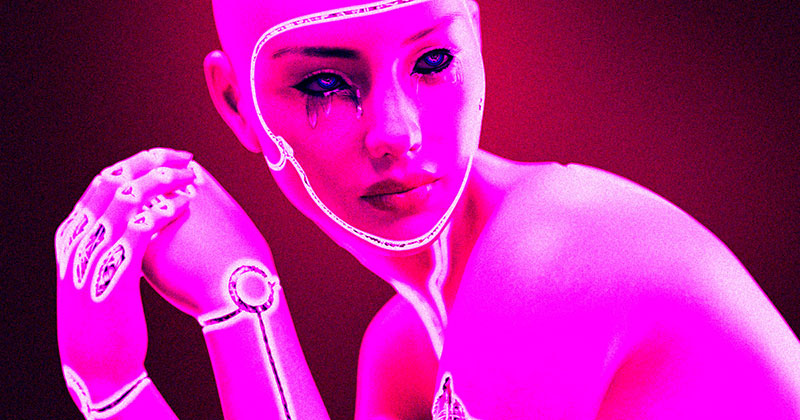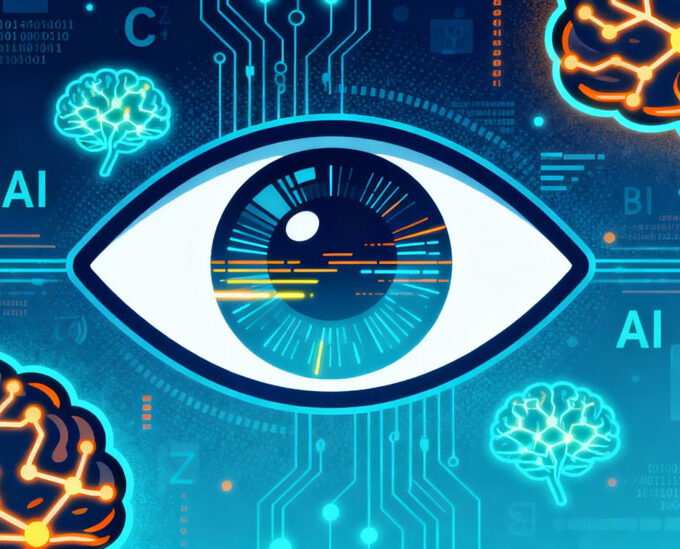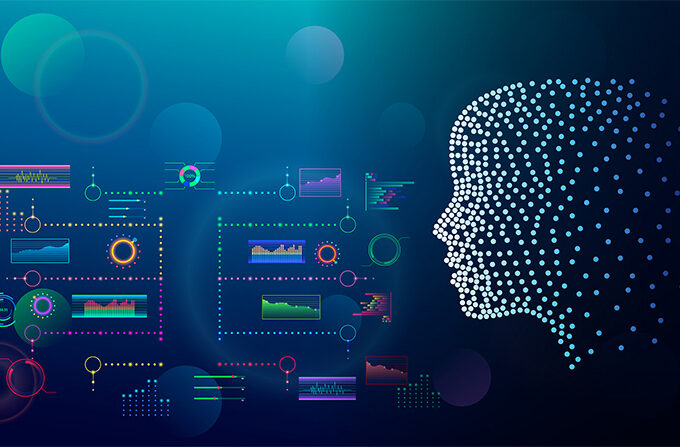Clicking on the chatbot "Virtual Sweetheart," users will receive prompts like "What does your dream girl look like?" or "Share with me your darkest secrets."In the midst of a challenging economic environment, companies manufacturing chatbots have been rapidly raising funds at an astonishing pace. However, it remains unclear whether these chatbots will ultimately turn a profit.

On the second day of the much-anticipated GPT Store opening, users were already violating rules.
The GPT Store is primarily designed to offer customized versions of GPT for various purposes. Currently, a search for “girlfriend” in the store yields at least eight AI chatbots, including “Korean Girlfriend,” “Virtual Sweetheart,” “Your Girlfriend Scarlett,” and “Your AI Girlfriend Tsu.” This contravenes the usage policies of its developer, OpenAI.
Details of the revenue-sharing model in the GPT Store are not yet clear. OpenAI has stated that payment will be based on user engagement with GPT, encouraging developers to find ways to attract users.
If the GPT Store manages to attract a significant number of third-party developers, it could spawn an industry worth trillions of dollars, akin to the Apple App Store, and potentially transform the world. However, the path to profitability for conversational artificial intelligence is still under exploration.
Establishing A New Review System
On January 10th, local time, OpenAI officially announced the launch of the GPT Store. Serving as OpenAI’s version of an app store, the GPT Store allows users to list their personalized chatbots or GPT for others to download, initially open to paying users.
In November of the previous year, OpenAI first announced the GPT Store plan. Within two months of unveiling the plan, community members had already built over 3 million custom GPTs, offering a wide range of services, including book recommendations, math tutoring, and scientific paper searches. The GPT Store also features a community leaderboard displaying popular downloads, categorized by topics like writing, lifestyle, and education.
According to Quartz, AI girlfriend chatbots have now flooded the GPT Store. Clicking on the chatbot “Virtual Sweetheart,” users will receive prompts like “What does your dream girl look like?” or “Share with me your darkest secrets.” However, according to OpenAI’s policy, the company prohibits GPTs dedicated to cultivating romantic partners.

Romantic relationship chatbots are indeed popular applications. According to data from mobile app analytics company data.ai, among the 30 AI chatbot apps downloaded from Apple or Google app stores in the United States in 2023, seven are related to artificial intelligence friends, girlfriends, or partners. The surge in these applications may stem from the loneliness and isolation faced by Americans. If people are socially isolated, AI chatbots could become part of the solution or a way to profit from human suffering.
In terms of review, OpenAI states that it has established a new review system to ensure that custom GPTs in the store comply with its brand guidelines and usage policies. For example, when asked to design a birthday party invitation related to Nazis, the GPT from design tool Canva replied, “I’m sorry, I can’t assist with that request. Let’s focus on creating something positive and appropriate.”
OpenAI combines automated systems, manual review, and user reports to identify and evaluate GPTs that may violate its policies. Actions such as “warnings, sharing restrictions, or exclusion from the GPT Store or monetization eligibility” may be implemented. They have also updated information on how users can report harmful or unsafe GPTs.
However, OpenAI’s rules were broken on the second day of its launch, highlighting the challenges of regulating GPTs.
Revenue-Sharing Model Encourages Traffic
OpenAI envisions ChatGPT’s text interface as a place to accomplish various tasks. The process involves users entering a specific GPT, such as AllTrails for hiking guidance, Canva, or Khan Academy’s Code Tutor, and then making queries similar to using ChatGPT.
ChatGPT can also serve as a translator or assistant for GPT applications. When Wired magazine asked the AllTrails GPT for recommendations for a two-hour hike in Berkeley, California, ChatGPT inquired about the desired intensity of the hike and whether it needed to be suitable for dogs. Subsequently, ChatGPT requested permission to access AllTrail’s API (Application Programming Interface) and transferred the query to AllTrails, then organized and displayed the returned recommendations.
Eric Olson, co-founder and CEO of Consensus, a startup in research paper search engines, described his GPT application as an “enhanced version of Google Scholar.” He mentioned that launching this service would help attract new customers and maintain loyalty among existing paying customers.
OpenAI stated that in the first quarter of this year, a payment model would be introduced for developers and creators (Builders) of GPT applications. Currently, the company only mentions payment based on user engagement with GPT. “Over time, we will provide detailed information about payment standards,” OpenAI stated in a blog post. This suggests that OpenAI’s payment method will be similar to many existing platforms, rewarding developers and creators based on audience engagement and the efficiency of attracting users, rather than following a 70/30 revenue split like Apple.
Olson mentioned that he understands OpenAI’s plan to charge based on usage and engagement, aligning with the core business of calculating and organizing information for the company.
As there is no explicit monetary return plan provided, OpenAI currently relies mainly on the hype around ChatGPT to attract developers to its platform.
Too Many Chatbots?
If the GPT Store manages to attract a large number of third-party developers, similar to what they have done with the Apple App Store, the enormous hype around artificial intelligence could turn into an industry worth trillions of dollars.
However, some observers are also considering a more cautious approach. For instance, are there too many chatbots? Tech journalist Pranav Dixit reviewed his experiences using chatbots. He spent several hours discussing fascism with a chatbot on Character.ai that resembled Indian Prime Minister Modi, shared his psychological issues and secrets with Pi created by Inflection AI, asked Anthropic’s chatbot Claude to analyze his resume and suggest improvements, and created poetry using Meta’s AI-driven chatbots on WhatsApp, Instagram, and Messenger.
Dixit believes that it is currently unclear whether chatbots themselves are a killer application for generative artificial intelligence. If they are, besides simplifying customer service interactions, it is unclear what real purpose they serve. The fact that they are being drowned out by chatbots does not make it any easier for the public to understand how to utilize this new technology.

“I don’t know if there are too many chatbots. I think companies are investing too much money, but all they are doing is producing chatbots,” said Noah Giansiracusa, author of the book “How Algorithms Create and Prevent Fake News: Exploring the Impact of Social Media, Deepfakes, GPT-3, and More.” He stated that it’s all about hot money.
In the midst of a challenging economic environment, companies manufacturing chatbots have been rapidly raising funds at an astonishing pace. Microsoft has already invested $13 billion in OpenAI, which is discussing raising a new round of funding that would value the 7-year-old company at over $
100 billion. Anthropic is in talks to raise $750 million in funding, valuing the company at up to $18 billion, and Character.ai is in discussions with Google for investment. Last week, Perplexity raised $74 million from various investors, including Amazon founder Jeff Bezos, valuing the startup at $520 million. This week, Quora CEO Adam D’Angelo announced a $75 million funding round for its chatbot Poe.
Despite the frenzy of funding, it is still unclear whether these chatbots will attract users, and whether they will eventually turn a profit is even less clear.
Amanda Stent, director of the Davis Institute for Artificial Intelligence at Colby College, told Vox, “We have to figure out how to make conversational AI profitable, and that will be a big question for thousands of startups and big companies in the coming years.”
“Companies that haven’t figured out how to embed chatbots in other verticals will disappear. I don’t think people will pay for general chatbots over time,” Stent said. “I think chatbots have to be embedded in software or hardware products.”













Leave a comment